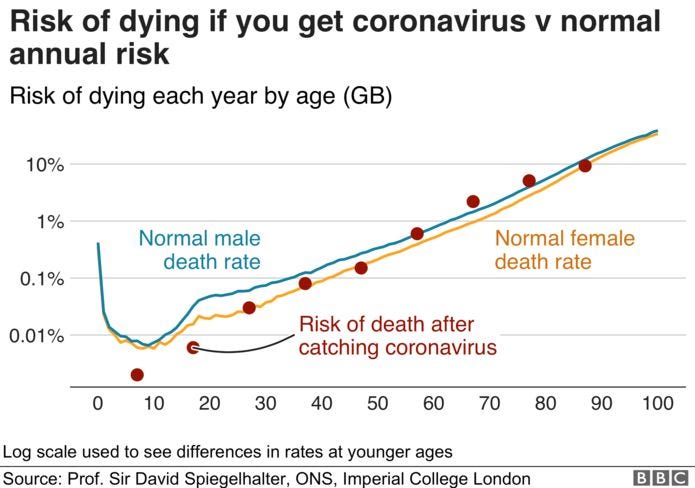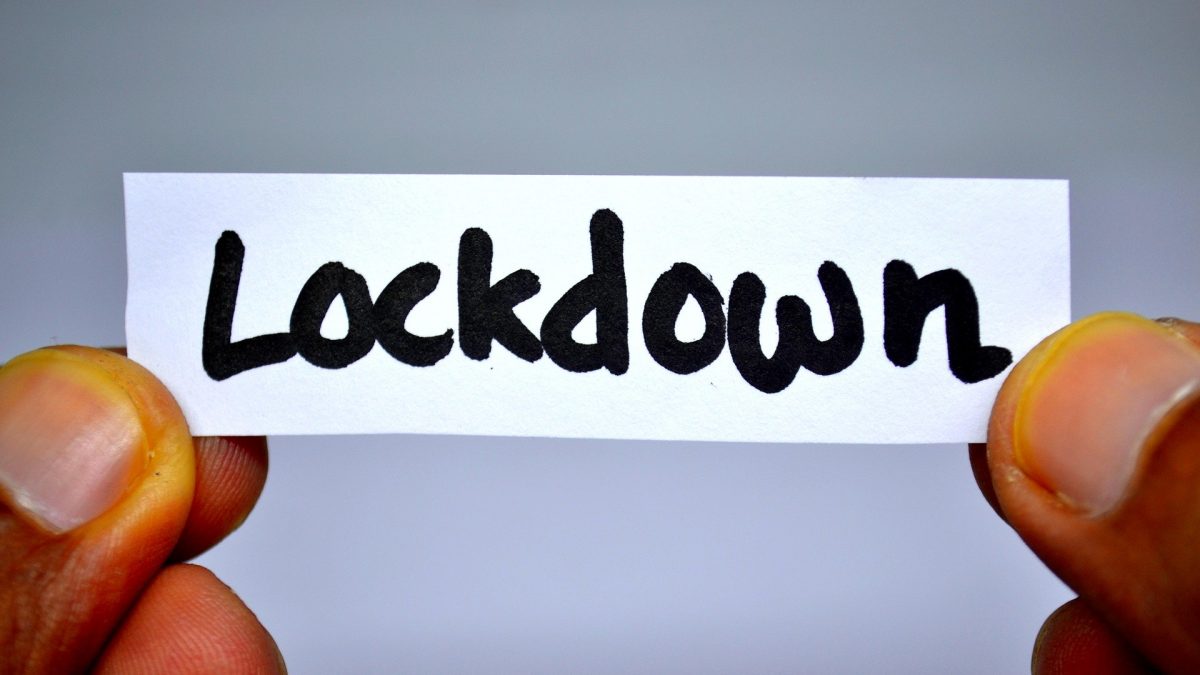
Citizen Claim: the EU citizen choice question
June 1, 2020
Maintaining Wellbeing During Lockdown.
June 3, 2020Article by guest contributor, Benjamin Coady (1st Year Law student at Lincoln College, Oxford) Originally posted on 22nd May 2020.
In this piece, I aim to make the democratic case for an easing of lockdown restrictions. The commentary does not involve an investigation of the measures in Scotland, Wales and Northern Ireland. The commentary made is my personal opinion on the current English lockdown arrangements — that is all: my opinion. I also have utmost respect for the rule of law and have tried to, and will continue to, adhere to the Government restrictions relating to Covid-19.
In a liberal, Western democracy such as the United Kingdom (specifically England), I believe every decision of the executive (the UK Government) should come with a justification. This justification should demonstrate that an action taken by the executive is right or reasonable. This piece aims to demonstrate, in my opinion, that the current English lockdown arrangements lack the justification required to keep measures in place which have such a drastic effect upon the liberty of the individual. This will be argued (i) by a reference to Human Rights and (ii) by examining the minuscule changes made to the old lockdown arrangements. Firstly, however, I am going to set out why I believe, unlike other prominent lockdown sceptics, that the lockdown was initially justified.
Initial justification of the English lockdown: The English lockdown was, initially, justified. The legal restrictions governing the lockdown in England are contained in the Health Protection (Coronavirus, Restrictions)regulations passed using the Public Health (Control of Diseases) Act 1984. Under s.3 of the Human Rights Act 1998, all delegated Parliamentary legislation (the way in which the English lockdown restrictions were created) must be consistent with the European Convention on Human Rights (ECHR). A particularly important provision of the ECHR sets out that no one shall be deprived of their liberty, apart from lawfully detaining people for the “prevention of the spreading of infectious diseases” (Article 5e). As Frederick Cowell aptly points out, the government justifies the initial, severe, lockdown restrictions by saying at the start of their legislation that the measures had been implemented due to the “serious and imminent threat to public health”. Most people, I think, will agree that Covid-19 has presented challenges not seen since WWII, and thus it was only right (and lawful), for the protection of English citizens, for the country to be locked down. It was right so that once more facts became known, we could make rational and objective decisions about what path to follow next. So far, so good…
(i) The human rights issues now: We have been told, through several ministerial statements, that we are “past the peak” of Covid-19. Much emphasis has been placed by government, the media and scientists on the importance of the so-called “R-rate”. This is the replication per person rate, which is the number of new infections that result from an existing case of Covid-19. If the number is kept below 1, the number of new infections decreases, slowly killing off the virus. The current (15th May) R-rate is 0.75. The initial lockdown has succeeded in its aim, reducing the R-rate from its high, pre-lockdown level, in order to stop the critical care capacity of the NHS being overwhelmed. This message was well displayed in the Government’s initial slogan of “stay home, protect the NHS, save lives”, with the NHS capacity issue being placed at the heart of the decision making process. However, the situation has changed. The Government has dropped the “save the NHS” element. This brings with it fresh human rights problems. One of the main critics of lockdown, Francis Hoar, has argued that the lockdown is disproportionate because of the effect it has upon Article 8, 9 and 11 rights of the ECHR. Article 8 is the right to respect for private and family life (restrictions currently impact your ability to maintain relationships with parents, siblings and children), Article 9 is the right of freedom of thought, conscience and religion (restrictions currently stop people from gathering at places of worship) and Article 11 is the freedom of assembly and association (restrictions currently stop you from associating or assembling with groups of others). I disagree with him that lockdown was disproportionate from the beginning, but I find his argument much more compelling when looking at the situation currently. When fundamental rights are being infringed (Art. 8, 9 + 11), we must apply a test of proportionality. The notion of proportionality is that the actions of a national government shall not exceed what is necessary to achieve an aim by balancing different risks and assessing whether the restrictions imposed by government are justified. Proportionality can be applied using 4 tests: (1) restrictions of a right need to be in pursuit of a legitimate aim, (2) the restrictions must be rationally connected with that aim, (3) the objective of the restrictions must not be able to be realistically achieved by other means, and (4) the balance of harms must fall in favour of restrictions. I will now apply the tests to the current arrangements:
(1) The lockdown is in pursuit of a legitimate aim = to prevent the NHS from being overwhelmed; (2) the lockdown is rationally connected with the aim = lockdown clearly reduces the R-rate; (3) the objective of lockdown cannot realistically be achieved other means = until a vaccine is developed, or the UK population develops ‘herd immunity’, it is not clear that slowing the R-rate can be achieved by other means; (4) the balance of harms must fall in favour of restrictions = this is the element which I believe is now not satisfied.
Test 4 is no longer satisfied. The test was satisfied at the beginning of lockdown because it was predicted the impact upon the NHS of Covid-19, without strict social distancing measures, could have been catastrophic. The outcome has been in no way catastrophic. With the benefit of hindsight, some of the predictions relied upon by the government have been widely criticised. Now, I firmly believe, the harm to the liberty of the individual is greater than the harm posed by Covid-19, and thus test 4 is not satisfied. Covid-19, as of 20th May, has tragically been the cause of death of 35,704 people in all settings in the UK. I cannot imagine how it would feel to lose a loved one to this dreadful disease. However, as tragic as every single loss of life is, the justification of lockdown was never to stop people contracting Covid-19 and thus saving life. Rather, lockdown was designed to slow the rate of infection (the R-rate), thereby protecting the critical care capacity of the NHS — saving life was just a logical corollary of trying to stop the NHS from becoming ‘overwhelmed’. As in any pandemic, lives are going to be lost, no matter the policies introduced to stem the flow of the disease. The only widely recognised measure that can stop death is vaccination, and this method of protection, the government has cautioned, may never come to fruition. This thought process, therefore, must have been the rationale behind the original UK government Covid-19 slogan: “protect the NHS” had priority over “sav[ing] lives”.
The NHS has, because of the initial lockdown, been protected. The Government have dropped “save the NHS” from their public broadcasts, as it is no longer needed. The Government did a brilliant job by creating the Nightingale emergency hospitals, more than doubling critical care capacity in the UK; they have now been mothballed and they only ever have treated around 100 people, all of whom were situated in London (the area, incidentally, with some of the highest population density in England). A&E attendance is at extremely low levels. Around the top of the peak in infections, 41% of acute NHS beds had no-one occupying them, with only 51% of the occupied beds holding a Covid patient. Hence, the initial justification for lockdown no longer applies.
With this lack of credible justification for lockdown, the measures are nowtoo restrictive. The lockdown is currently only in place to stop people contracting Covid-19, which, as Lord Sumption (a former Justice of the Supreme Court) convincingly argues, raises troubling questions about our relationship with the state. His lordship suggests that it is “our business, not the state’s” to deal with risks to our own health. This is on top of the argument that, as the Government admits in its own papers, Covid-19 may be with us for a very long time (‘new normal’ is being touted constantly by media outlets), and thus lockdown is surely just putting off, and putting off, and putting off, the inevitable point at which people need to go out and face the risks of living and dealing with Covid-19.
The immediate counter to this argument, as forcefully put by Jonathan Compton, is the ‘societal argument’. He says that if we leave it to you and I to decide to go out, see friends and run the risk of catching Covid-19, there is a chance the R-rate could surge to such a great level that, in his words, “basic supply chains start to break down, less/no food in shops…”. This reasoning, respectfully, ignores the facts and is easily mitigated. Firstly, mitigation: the solution to the societal problem is that you allow those who wish to go out to go out, and those who wish to stay in to stay in. My two Grandma’s are a case in point: one is very scared, the other would happily return to normality tomorrow — I say let them decide for themselves what they want to do. You then introduce regulations such as only allowing supermarkets/medicine suppliers to deliver to people who are in the highly vulnerable category/those who have chosen to continue with their own lockdown measures, shielding those who are endangered/feel worried about the risk to their health. Secondly, facts: Covid-19 is not a prevalent killer of those who are younger than 65 with no serious underlying health conditions. Professor Sir David Spiegelhalter, of Cambridge University, demonstrated with his research that the risk of dying from Covid-19 is extremely similar to the underlying risk people have of dying each year annually. Additionally, the evidence for the ‘second-wave’ that is meant to hit the NHS if we return from lockdown to normality too quickly appears almost anecdotal; the Government, in their ‘Coronavirus action plan’, make it quite clear that much of their planning has been based off previous pandemics, in particular the Spanish Influenza pandemic of 1918. This is said to have killed around 500 million people globally, and is driving fear of a ‘second wave’ that could again, possibly, overwhelm the NHS. It seems strange that Spanish Flu is being used as a benchmark (with a mortality rate of roughly 2%), when Covid-19, according to ongoing research from Stanford University, has a death rate of approximately 0.3%. On top of the difference in mortality rate, medical science in 2020 compared to 1918 is incomparable — the UK, war-stricken in 1918, is in a far better place to combat a pandemic now than it ever was those 100 years ago. Finally, Spanish Influenza affected the young and the physically fit, whereas Covid-19 impacts those who are overweight, have serious underlying health conditions, are old and also those from BAME backgrounds. Thus, I argue, the risk posed by Covid-19 is not as great as should be required for such wide-ranging and draconian restrictions the lockdown has imposed and, crucially, would not break down supply chains as suggested by Compton.

Life, in order to fulfil, requires social human contact. The mental health of a population will inevitably suffer without such contact. Any social contact, of whatever sort, carries an element of risk taking, particularly with regard to one’s health. Another study from Stanford University has compared the risk of contracting Covid-19 and dying (in the last few months) to dying whilst at the wheel of a car. They concluded that those under the age of 65 (even those with serious underlying health conditions) had the same risk of dying from Covid-19 as they would have done from driving about 185 miles a day. This is not a risk, I argue, that justifies national lockdown.
Finally, in this section of my argument, I have not yet dealt with the economic cost of Covid-19. I do not wish to analyse this impact, as life and money should not be compared, but it will nevertheless be catastrophic. The poorest suffer most when the economy is damaged, and I believe the inevitable recession and reduction in living standards will possibly kill more people through poverty than the lockdown will save. This cartoon (artist unknown) I saw on Twitter sums up the inevitable consequences.
(ii) The minor changes made to lockdown by the Government: This section is a small additional section about how little the Government have actually changed the lockdown restrictions. The Government built up and built up to Boris Johnson’s announcement, where he changed the Covid-19 slogan and made some minor changes to the UK lockdown restrictions, but the relaxation did not go anywhere near far enough.
Tom Hickman, in a brilliant piece entitled “A very English lockdown relaxation”, dissects the Government’s purported changes to the lockdown. He sarcastically comments (and rightly so) that the changes to lockdown were made to “picnics, tennis, golf, garden centres, country outings in the family car and house buying” — all middle-class, middle-England changes. Little mention of measures that will save the poor from dying of poverty…
The changes weren’t at all as drastic as many commentators expected. These are outlined below (and by Hickman in his piece):
- Outdoor sports courts are now allowed to open, while ensuring people adhere to the correct social distancing measures
- Council dumps and recreational garden centres have opened, with the social distancing caveat
- The significant change came in the form of allowing people to leave home “for the purposes of open-air recreation to promote their physical or mental health or emotional wellbeing”, either alone, with members of the household, or one member of a different household
This is where the changes stop. They virtually amount to nothing. We are still basically living under house-arrest. Below, I analyse the ‘changes’ made to the restrictions, which are not in fact substantive changes at all. They are changes in emphasis designed to convince the population that lockdown is being eased quicker than it actually is.
- Changes were purportedly made to the exercise restrictions. It is now acceptable to exercise an unlimited amount with one person who is not in your household, outside, observing the social distancing guidelines. Hickman says that the old UK Coronavirus Guidance previously stated that “you must not gather in groups of more than two people in public spaces like parks”. The rules and guidance therefore used to seem to imply that, because you could only be in a park in order to exercise, you could meet in pairs in parks for exercise, or meet up whilst exercising in order to negate the restrictions. We were told change, there was none. In addition, the Prime Minister emphasised in his address that people could now take unlimited exercise — it has, however, always been the law in England that you could take as much exercise as you liked; only in Wales did the one form of exercise a day rule apply. We were told change, there was none.
- The PM placed emphasis on getting into work. It has, however, always been possible to go to work when it is reasonably necessary. We were told change, there was none.
- We were told we could use the car in order to drive for exercise. It has, however, always been legal in England to drive in order to take exercise. We were told change, there was none.
- Unlike other recreational sports, Golf is a game which, as Hickman again highlights, does not take place on a sports court. Therefore, according to the old restrictions, Golf has never been prohibited. We were told Golf courses could now open, when in fact they could have always been operating. We were told change, there was none.
The information above is a demonstration of how the Government have attempted to ‘fob off’ the population by trying to emphasise drastic changes have been made, whereas the reality is somewhat different. Not to mention that the 2m social-distancing rule is not, and has never been, the law and is not a restriction; it is merely an executive decree that the ‘herd’ is adhering to.
To conclude, I believe we need a much faster relaxation of lockdown. We have been under de-facto house arrest for over 60 days now, and I am struggling to see the justification for it— the scales of liberty and justice have tipped over from justified restriction on freedom because of an unknown threat, to an unjustified restriction on liberty, as we now know much more about the potency and risk this pandemic poses. It now should be up to us to choose, and not the state, to take on the risk. May we be healthy, may we be free, may we enjoy the basic rights of the private individual! Χαιρετε!





